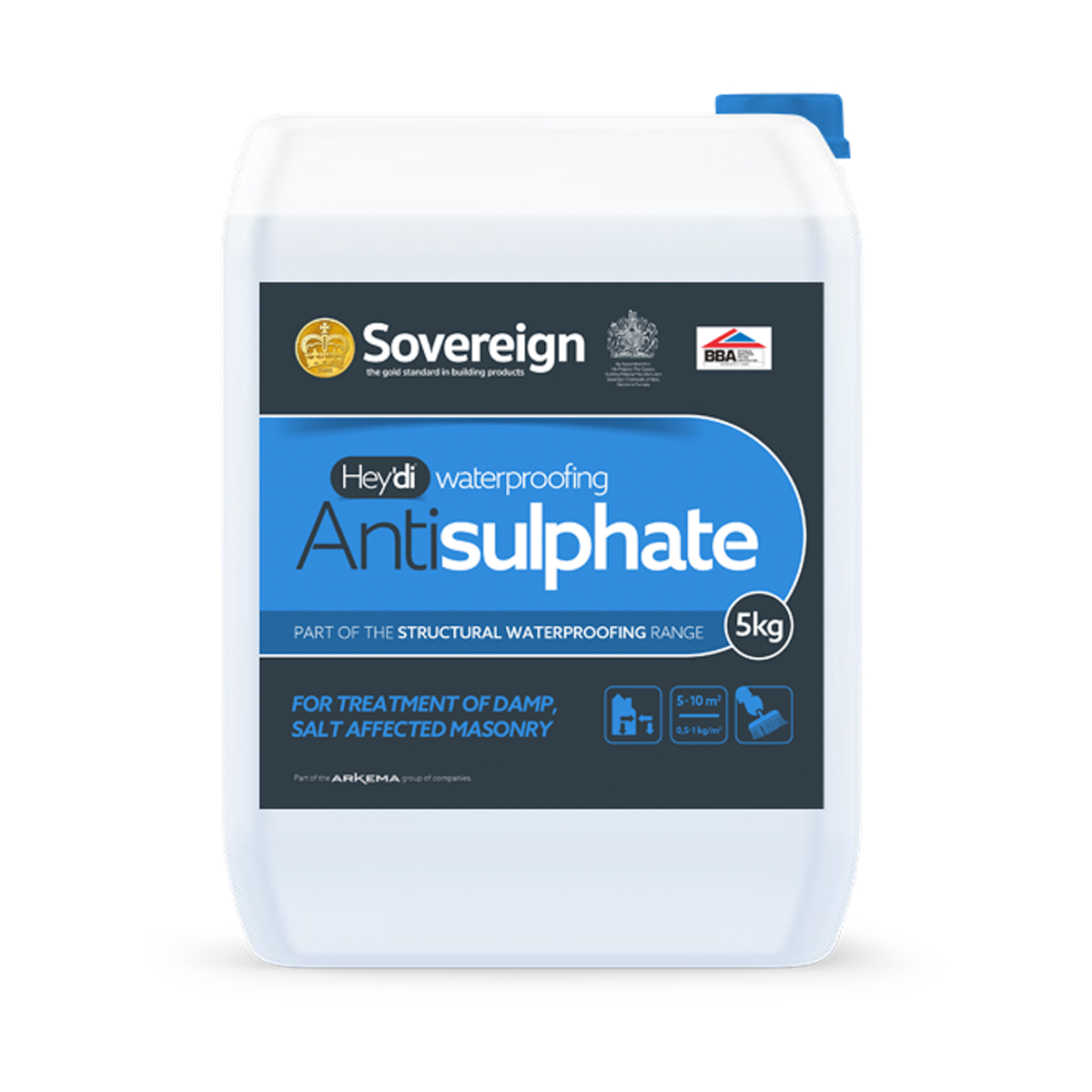Sovereign Hey’di Antisulphate
£52.69 – £87.16 (inc. VAT and standard delivery)
Sovereign Hey’di Antisulphate
Sovereign Hey’di Antisulphate is used to treat damp, salt affected masonry. It is an essential element of the Hey’di K11 basement tanking system and is also useful in the treatment of above ground structures such as chimney breasts and in the treatment of flood damaged properties. Various specifications are available from the technical department on request.
Hey’di Antisulphate chemically reacts with salts in masonry, converting soluble salts into water insoluble reaction products, preventing their movement in to newly applied tanking and renders.
Benefits and Features
- Essential element of the Hey’di K11 basement tanking system
- Used in flood damaged properties
- Prevent the movement of Hygroscopic salts
Properties
Hey’di Antisulphate chemically reacts with salts in masonry, converting soluble salts into water insoluble reaction products, preventing their movement in to newly applied tanking and renders.
Preparation
Hey’di Antisulphate is a deeply penetrating liquid that when applied to salt affected masonry reacts and turns soluble salts insoluble. This prevents the passage of hygroscopic salts from the substrate into any new mineral coating that is applied such as K11 tanking or cement render. All substrates must be clean, absorbent and free from gypsum, bitumen, grease and oils, dust and paints. Existing salt affected plaster must be
completely removed. Joints should be raked out.
Usage
Hey’di Antisulphate is applied in two stages. The first coat must be diluted 1:1 with water. Apply this solution to the entire surface until saturated. After this coat has dried in around 6 to 18 hours a second application using neat Antisulphate is required, again until the substrate is saturated. Hey’di Antisulphate can be applied by brush, however the use of a standard garden sprayer, producing coarse droplets is recommended. Tanking or rendering can commence as soon as the second application of Antisulphate is complete.
Coverage
Approximately 35 – 45 m² per 10 kg for a two coat application depending on the absorbency of the substrate.
Data Sheet – HEYDI-ANTISULPHATE-TDS-31
Be the first to review “Sovereign Hey’di Antisulphate” Cancel reply
You must be logged in to post a review.




Reviews
There are no reviews yet.